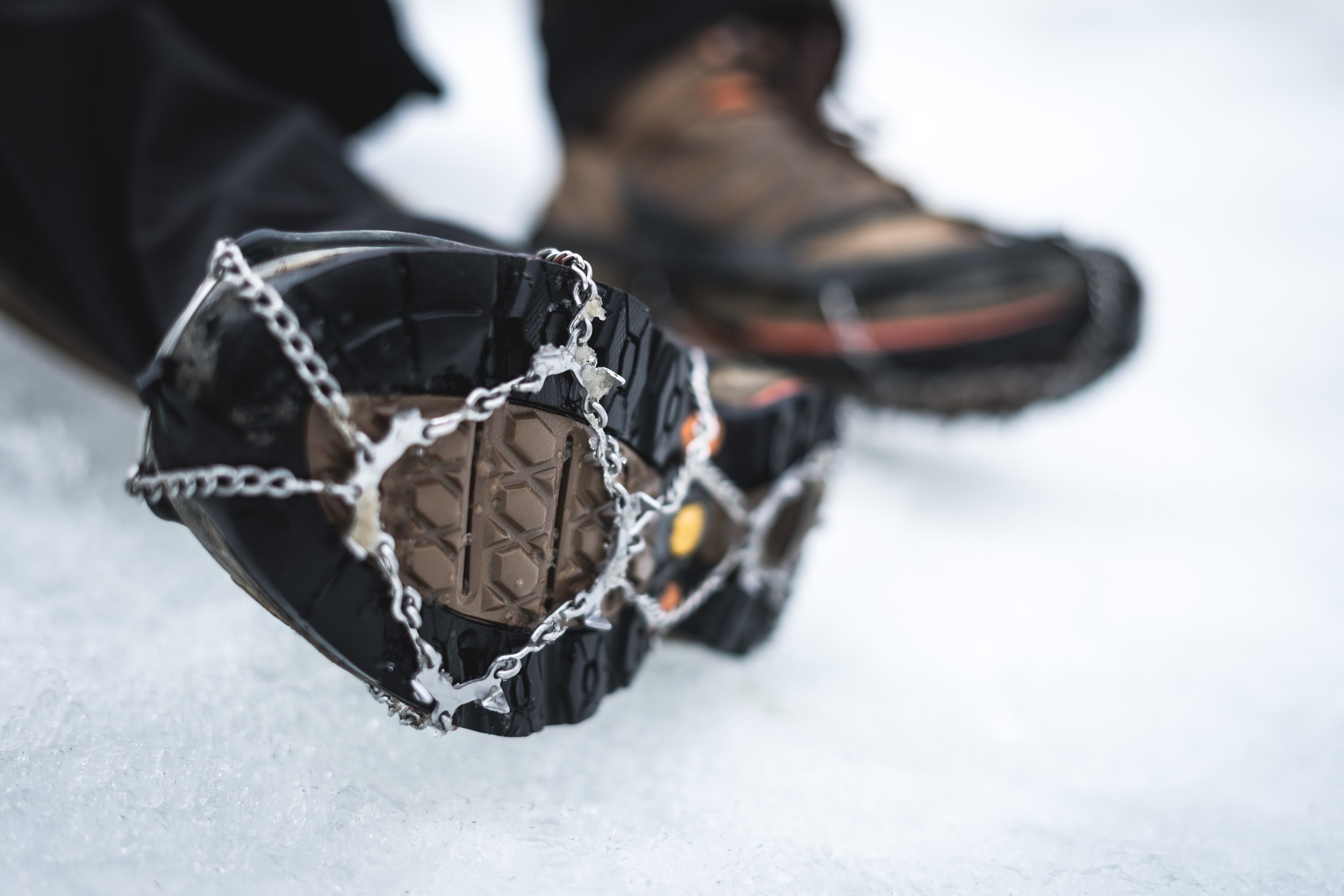Saying “down” over and over again doesn’t work. Here’s why. (Photo: a Frenchie/Boston Terrier mix stands with his front paws touching a person’s leg)
Are you making this mistake with your new puppy?
If you are using “down” for two different things, you’re confusing your puppy.
Confused puppies seem like they aren’t listening to you, when in reality they are confused by your directions because the directions are unclear.
I hear clients, friends, and people on the street saying “down” to their puppies and dogs when the puppy’s two front paws are on someone’s leg.
Often the owner is repeating herself over and over as her puppy plays patty-cake (or Wolverine, if the puppy is older and in need of a nail trim) on a stranger’s legs. “Down. Mushroom, down. Get down. Down! I’m so sorry, I don’t know why she’s not listening. Down! DOWN!” This is paired with pulling the dog’s harness many, many times. One of the worst parts of this scenario is that the stranger is petting the puppy, rewarding this undesirable behaviour.
This is what your dog thinks “down” means…if you have taught him “down” (Photo: German Shepherd mix lying down on a balcony)
Here’s why “down” isn’t working:
If you are also teaching your puppy to lay down on command, you are confusing your puppy when they are jumping on people because you’re not actually asking for a “down” in that moment. What you mean, is “off.”
Reserve “down” for “lie down” and use “off” for “I want four paws on the floor right now.”
Use “off” when your puppy puts her front paws on:
-your furniture
-a stranger’s legs
-your countertop
-your legs
-your children’s legs
-anything else you don’t want her front paws on
Do your very best to never allow your puppy’s paws to do any of those things. You can prevent unwanted behaviours by:
-teaching the place command [this provides your puppy with a job (the job of calm) rather than allowing her free roam of your home where she chooses jobs you don’t like - counter surfing, snatchlng food out of your toddler’s hand, chasing your cats, barking out the window, etc)]
-leaving a lightweight leash on your puppy when she is inside the home (supervise her to keep her safe)
-crate training (when you teach crate training properly, your dog learns to love her comfy den)
This is how to teach your dog to pull on the leash and that other people are more relevant than you are. (Photo: chihuahua on a harness pulling toward a hand that is holding a cookie.)
Do your very best not to repeat yourself as well. Changing “down, down, down. Down! DOWN!” to “off, off, off OFF! OFFFFFFF!” is not the answer.
Say it once. Follow through if your puppy doesn’t listen. Reward her with getting it correct. For example: Your puppy puts her paws on your father’s legs. You say, “off.” Your puppy returns her front paws to the ground. “Good off,” delivered with a nice smile.
Check out our Reels on Instagram for more tips on “off” and “down.” There is a brand new Reel that was made by my amazing shadow student, Julia and her dog, Maisy. Remember on Instagram and Facebook, you’ll find us at Go Beyond Dog Training. On TikTok @ Beyond Dog Training.
Lead on, Dog Leaders!
Alyssa
Photos by: Upsplash Images (a Frenchie/Boston Terrier mix stands with his front paws touching a person’s leg,) Upsplash Images (German Shepherd mix lying down on a balcony,) Tamara Bellis @tamarabellis (chihuahua on a harness pulling toward a hand that is holding a cookie.)




















































